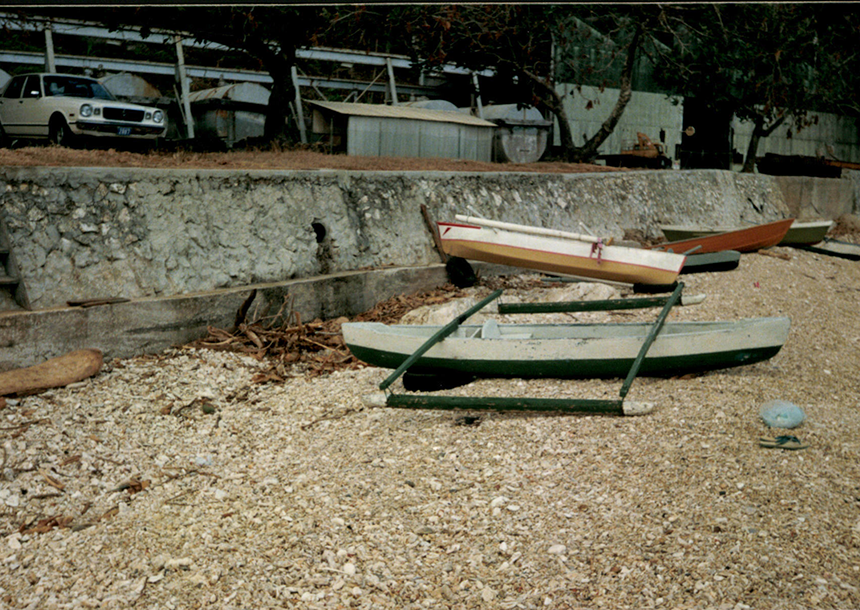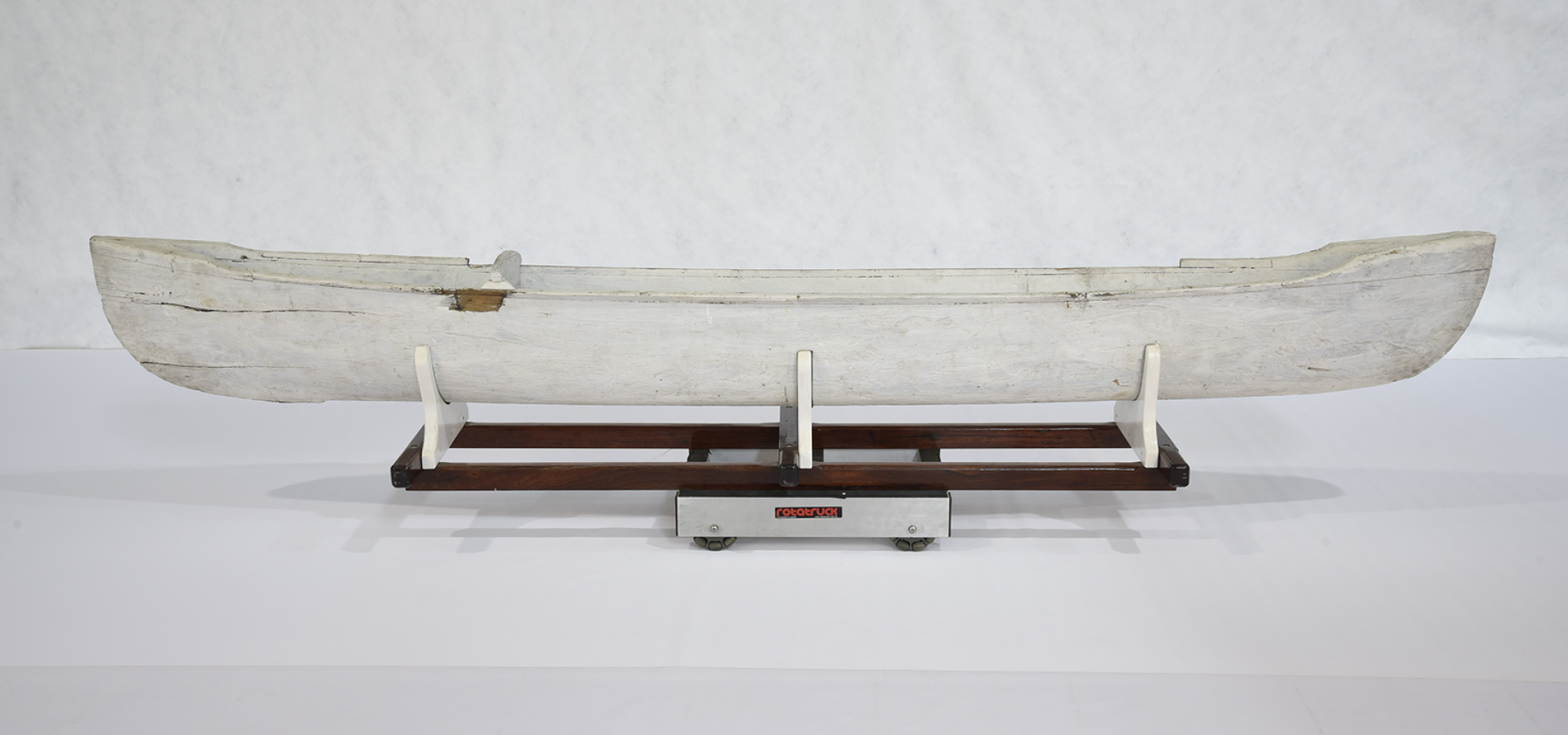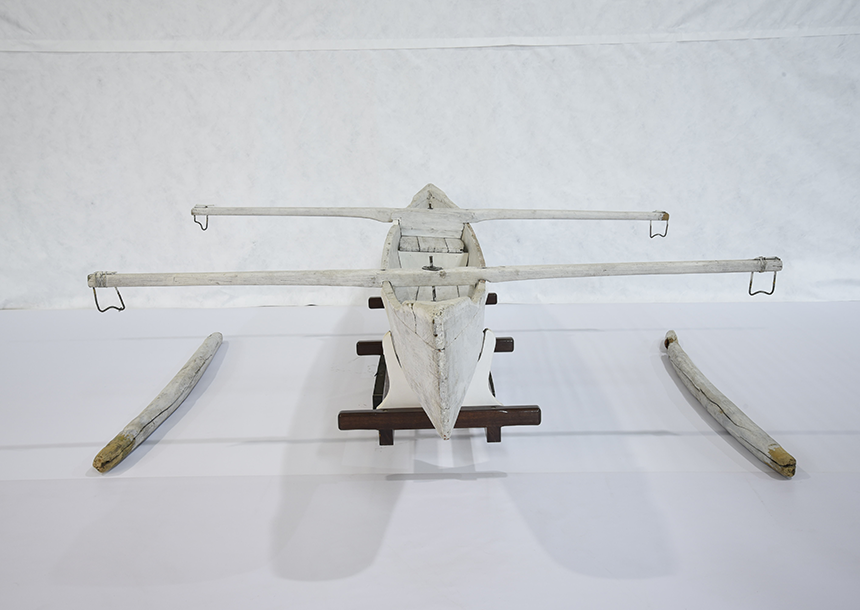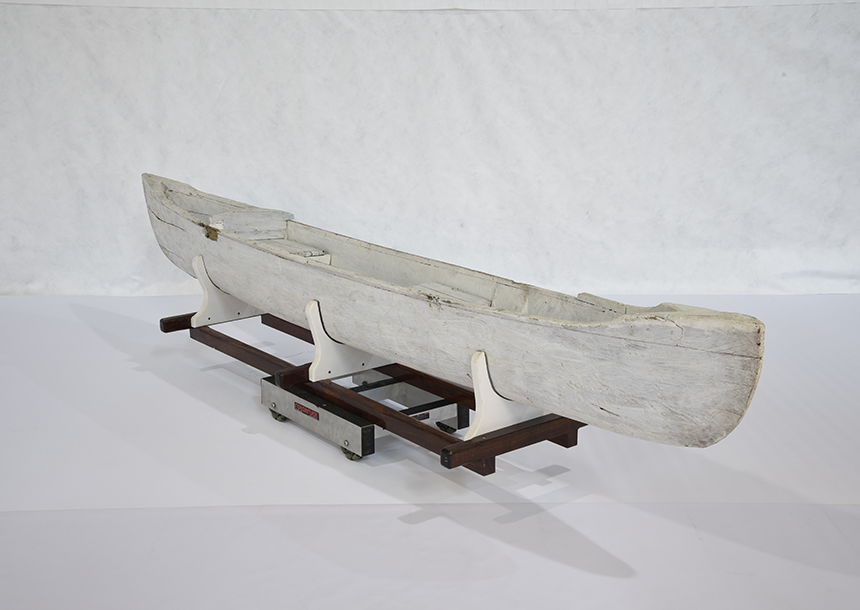Outrigger canoes have a variety of different designs and sizes; from smaller dugouts like this one to larger plank-built vessels. They can be fitted with a single outrigger fastened to one side or two outriggers on both sides. Some carry sails others are paddled. Outriggers originated in Southeast Asia, and it is believed that they were originally developed for sea travel and that the outrigger served as stabiliser. Early outriggers used so-called crab claw sails, which later evolved into square or rectangular tanja sails. The watercraft were used for transport taking seafarers to Polynesia, New Zealand, the Indian Ocean and even to Madagascar. The traditional Christmas Island outriggers are small double-rigged dugout canoes.
The origin of this Christmas Island outrigger is largely unknown, however it is identical to other Christmas Island outriggers known as ‘koleks’. This type of vessel has Malay design origins and was first constructed on Christmas Island in the 1930s. It is characterized by a shallow draught, dug out form, and clean lines steadied by double outrigger floats. They were built in three sizes, for one, two or three people – this outrigger was likely built for one or two.
The main hull of the kolek canoe was likely made from local Gyrocarpus Americanus wood, which was cut and shaped by hand. Most of the boat construction was done at the site where the tree was felled – the island’s steep terrain made boat building difficult. This type of wood is susceptible to rot, and affected sections were often patched with iron. The floats on the kolek are likely to be the same wood as used in the hull, whereas the two booms are either Seraya, Chengai, or Redwood. Based on its condition, this kolek was likely built later, in either the 1950s or 1960s.
This kolek would have primarily been used for fishing, and whilst slow in the water, it would have been very stable. On Christmas Island, fishing in koleks was done close to shore along the north coast, as the outriggers were built for navigation on shallow and calmer waters. At times, some would fish along the sheltered side of Egeria Point and stay out into the night.
A common lifespan for a kolek was three to five years, sometimes up to ten years, depending on the deterioration of the wood. The vessels were built for a specific purpose, and it was not uncommon for koleks to be disposed after a handful of uses.

Image: Kolek (foreground) on Christmas Island beach, about 1989. ©Department of Transport



